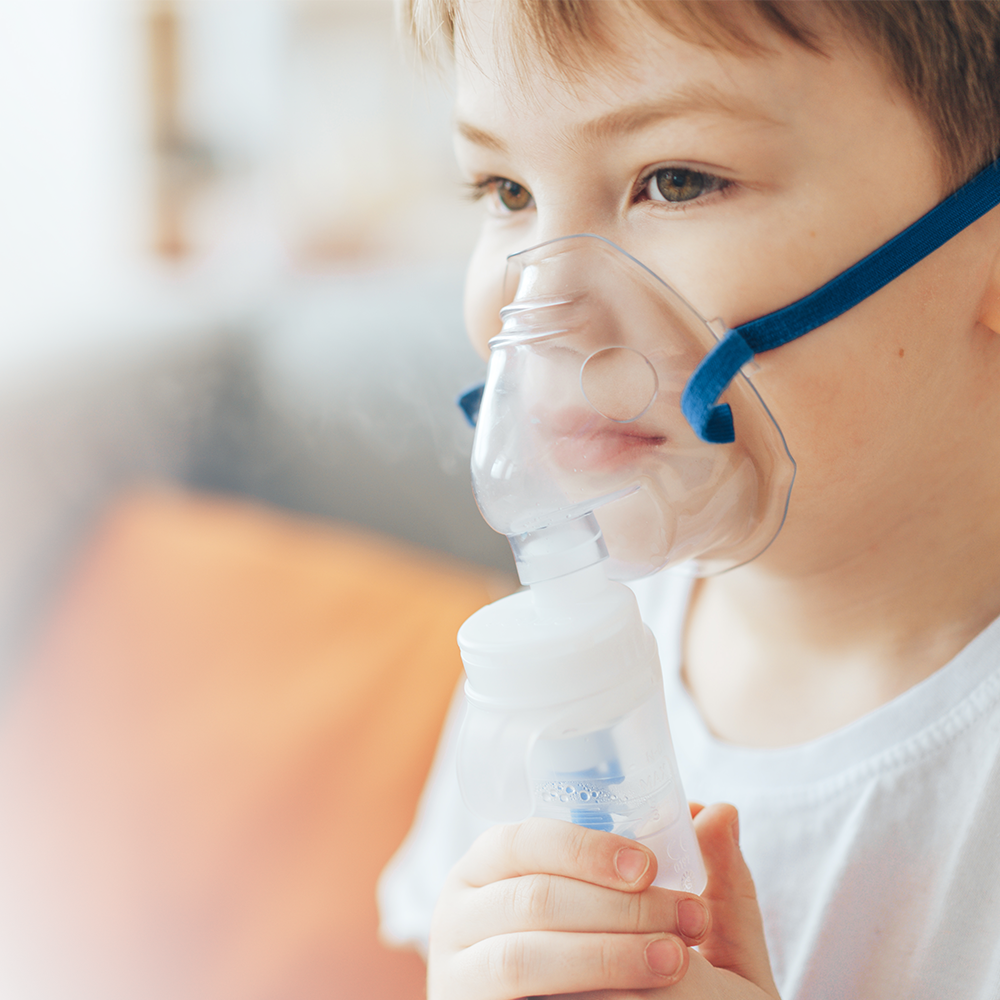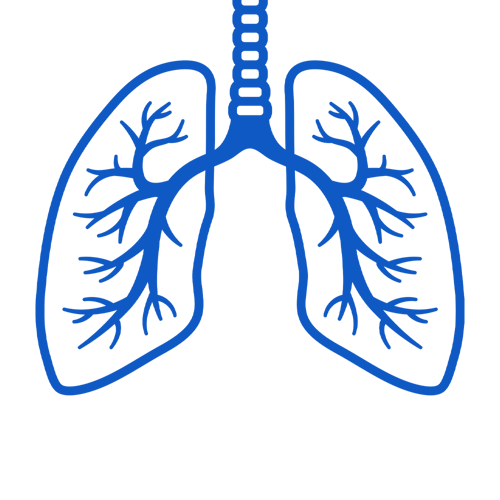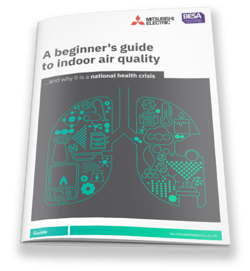
Indoor Air Quality (IAQ)
This is a dedicated area to help raise awareness of the importance of indoor air quality, the conditions of air inside buildings and how our sector can work together to make buildings safe havens.
What is Indoor Air Quality?
Indoor air quality (IAQ) refers to the air quality within buildings. Poor indoor air quality due to indoor air pollution is known to affect the health, comfort, and well-being of building occupants.
The invisible threat made visible
On average we take 22,000 breathes every single day, that's around 9,000 litres of air every day! The air you breathe affects every part of your body, from your lungs to your heart and brain, It is so important to take the steps to ensure the air we breathe is cleaner as it affects every part of our body! What’s more, the air in our homes, offices, schools and factories is also contaminated - with polluted outdoor air as well as other impurities generated indoors.
Understanding Indoor Air Quality and why it's so important
We want to help you understand indoor air quality, the importance of good ventilation and improving the air quality in our buildings, schools and our homes. The quality of the air we breathe has a direct impact on our health, wellbeing, comfort and productivity.
The World Health Organization (WHO) identifies several serious long-term illnesses linked to poor air quality, such as asthma, lung cancer, heart disease, Alzheimer’s disease, and other inflammatory conditions. Did you know People in the UK spend over 90% of their time indoors, and unfortunately, being inside at home or work does not shield them from polluted air. Therefore, managing indoor air quality is crucial for our health and well-being.
The UK government also emphasizes that poor air quality is especially harmful to children, potentially causing lifelong health issues due to prolonged exposure to pollution. Additionally, air pollution is the fourth leading cause of death, following cancer, obesity, and heart disease.

What are the most common causes of poor indoor air quality?
Understanding the factors that affect air quality is crucial for effectively managing and monitoring indoor air quality. Since indoor air quality can fluctuate hourly and daily, we recommend continuous monitoring to help you maintain and improve the air quality in your buildings and homes. Our Monitoring & Managing Indoor Air Quality in the Home blog provides top tips for enhancing indoor air quality in your home.
Here are some of the most common air pollutants you should be mindful of
Particulate Matter such as PM10 & PM2.5
Particles are defined by their diameter for air quality regulatory purposes. Those with a diameter of 10 microns or less (PM10) are inhalable into the lungs and can induce adverse health effects. Particulate matter poses serious health problems both outside and indoors. It is recognised by the WHO as one of the air pollutants that is most damaging to human health because it can penetrate via the lungs deep into the bloodstream and organs.
Particulate matter is produced indoors by activities such as cooking and cleaning; exhalation; shedding of dust from people and processes; from fixtures and fittings such as carpets and furniture. It can cause irritation to the nose and throat. For people with asthma and other lung conditions, it can lead to hospital admissions. PM also has an adverse effect on people with heart conditions and stroke sufferers. It has also been linked to anxiety and hypertension.

Carbon Monoxide
Carbon monoxide is a poisonous, flammable gas that is colourless, odourless, tasteless, and slightly less dense than air. We use carbon monoxide in gas appliances such as cooks, and gas boilers. Exposure to high levels of carbon monoxide is lethal, and at lower levels impacts our health, and general wellbeing causes headaches, dizziness, nausea.
Carbon Dioxide
Carbon dioxide is a natural gas present in the air and caused by respiration; which can build up in poorly-ventilated spaces. The impact on our health & wellbeing when exposed to extremely high levels can cause asphyxiation at extremely high levels, and at low levels impacts our general comfort causing drowsiness, headaches and makes it harder to concentrate.
Mould
It’s usually easy to spot when a home has a mould problem, although some types of mould are not visible. Typically, it appears as a dark stain or
black growth around windowsills, walls and ceilings. But mould doesn’t just look unsightly - it’s also bad for your health, and for some people, it can be deadly.
Mould spores can be spread through air currents, and is caused by damp conditions and poor ventilation; accumulation of dirt. It has a real impact on our health and wellbeing, especially on our lungs and can lead to asthma attacks and allergic reactions. Here are our Four Steps to Mould-Free Homes
You can read more about Indoor air pollutants in our Beginners Guide to Indoor Air Quality, this guide will equip with the knowledge to start tackling poor indoor air quality and ventilate your buildings, and homes.

Improving and achieving good indoor air quality
While poor air quality has negative effects on health, the opposite is also true. Improving air quality could benefit national health outcomes, reduce pressure on the NHS and prevent premature deaths. Research by the UK Health Forum and Imperial College London (for Public Health England) estimated that a 1 µg/m3 reduction in fine particulate matter (PM) could prevent around 50,900 cases of coronary heart disease, 16,500 strokes, 9,300 cases of asthma and 4200 lung cancers over 18 years.
Good air quality has been shown to improve a range of mental and physical health factors. To improve indoor air quality in our buildings and homes there are number of things we should consider focusing on,
Ensure good standards of ventilation
Ventilation may be achieved naturally (e.g. opening windows, trickle vents etc.), as well as through mechanical ventilation systems, or by a combination of the two. It is important to strike a balance between the benefits of ventilation against issues such as:
- The energy required to heat (and/or cool/humidify/de-humidify) the outdoor air before it enters the building causing discomfort to occupants with air that is too cold or too warm
- The risk of introducing more pollution into the building
- The possible increase of noise in the building caused by additional mechanical ventilation or through open windows

Reduce sources of pollution
It is important to remember that things like cleaning products; aerosol sprays; paints, carpets, scented candles; glues, resins, cigarettes, printers, photocopiers are indoor pollutants and are thought to be responsible for a range of health problems from headaches and eye irritation to serious long-term illness such as cancer.
You should consider applying a ‘green’ buying policy to the use of paints, finishes, furniture and cleaning products. These sorts of materials are increasingly tested and certified for their pollutant capability.

Regular monitoring of indoor air quality
In order to improve the indoor air quality in your buildings and homes, you must first understand the problem and continuously monitor the air quality, which can vary, even on an hourly and daily basis.

Setting the standards of Indoor Air Quality
BESA has produced a series of concise guides on good practice, including A Beginner's Guide to Indoor Air Quality, Indoor Air Quality for Health & Well-Being, Buildings as Safe Havens. and a Practical Guide to Mould. These free resources are designed to assist building owners, managers, and engineers in interpreting indoor air quality (IAQ) data and developing effective strategies to improve the indoor environment.
By setting the standards for IAQ, BESA helps you understand how to enhance air quality in buildings and homes, empowering you to take meaningful steps toward healthier indoor spaces
BESA's IAQ Action Group aims to provide clearer technical guidance for members and the industry at large on this important topic and also to raise awareness at government level; with the general public; and across the sector through its marketing and PR departments..
World Ventil8 Day - 8th November
Taking place every year on 8th November, World Ventil8 Day aims to raise awareness of the importance of ventilation as a crucial part of enabling health and wellbeing of people. It also seeks to recognise and celebrate the ventilation and indoor air quality community. We want you to be part of it, whether you are a ventilation professional or someone with a passion for fresh air in your buildings.
As a champion of the importance of ventilation in improving our health and wellbeing, BESA are a founding member of World Ventil8 Day
More related content from BESA
The BESA Academy online interactive courses are designed to equip you with the knowledge and skills to effectively monitor, measure, and mitigate unhealthy indoor air.
Many people are spending even more time in their homes, so it’s important to understand how to monitor and manage indoor air quality in the home.









